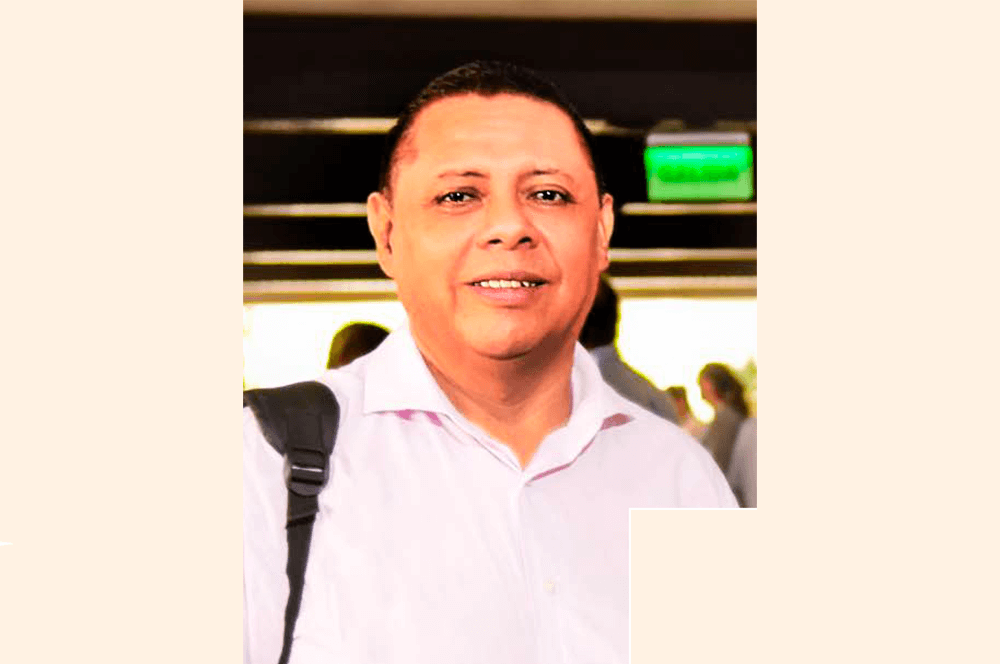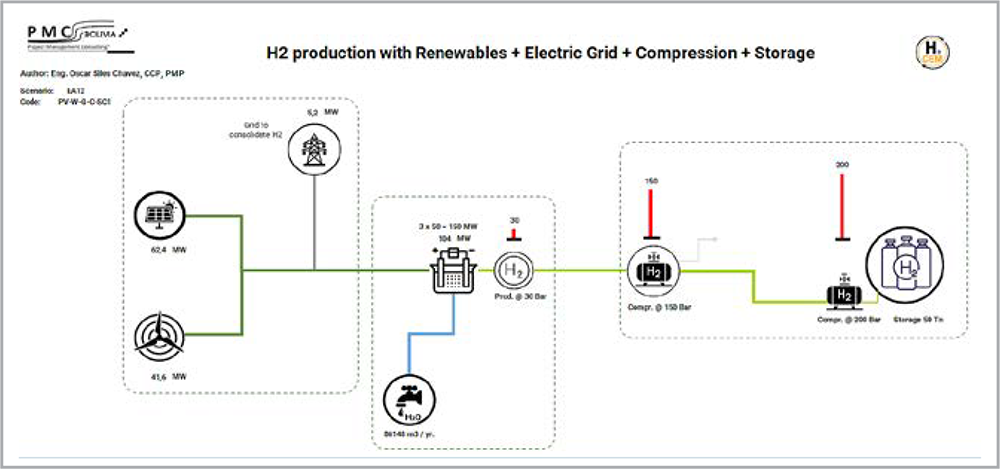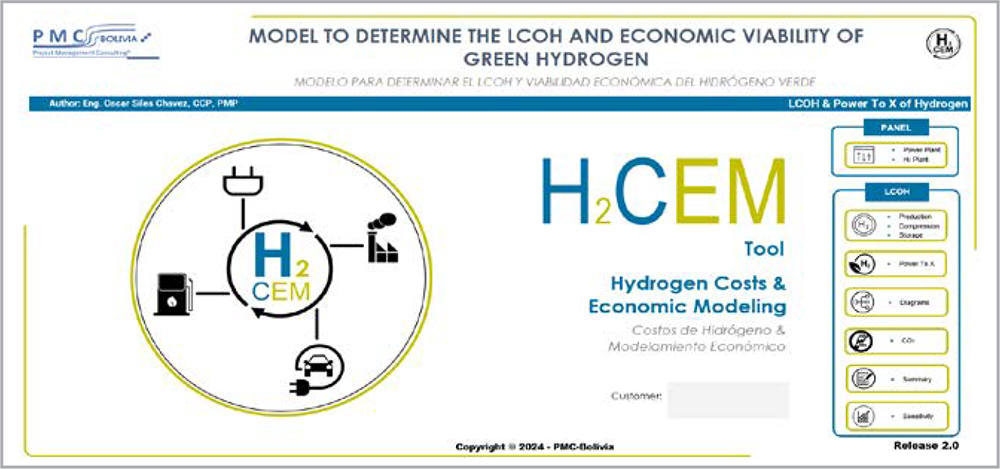
BOLIVIA NEEDS TO CONDUCT FEASIBILITY STUDIES FOR GREEN HYDROGEN
Decarbonizing energy matrices, especially in countries with a high dependency on fossil resources, is the key premise of expert Oscar Siles Chávez, President of AEE Bolivia Chapter...
ISSUE 137 | 2024
Ing. Oscar Siles Chávez (*)

“The H2CEM Model is an integral and comprehensive model that encompasses analysis from hydrogen production to compression and storage, providing inputs for informed decision-making.”.
The need to decarbonize energy matrices is becoming increasingly pressing, particularly in countries heavily dependent on fossil resources. There are two fundamental reasons for this: first, to safeguard energy security in terms of dependency and vulnerability, and second, to meet international commitments to reduce CO2 emissions. Bolivia is no exception, especially given that approximately 70% of its installed electricity generation capacity relies on natural gas. Moreover, the timeframe for developing natural gas fields is reaching its limit in relation to the current production reserves.
In this context, green hydrogen (H2V) as an energy vector has gained significant relevance in recent years, dispelling many myths that were promoted a decade ago. Globally, the development of H2V ecosystems has grown exponentially, with applications of this energy vector focused on four main pillars: power systems, heavy industry, electromobility, and synthetic fuels.
DISPELLING MYTHS
To address many of the myths surrounding green hydrogen in Bolivia, it is essential to conduct studies on technical feasibility, economic viability, and environmental sustainability. Along these lines, it is crucial to determine the cost of producing H2V in Bolivia (LCOH, Levelized Cost of Hydrogen) in USD/kg. This question often arises during conferences, congresses, webinars, and business advisory meetings.

To answer this question in a more scientific and objective manner, I have been developing a model for the past two years to determine the LCOH (Levelized Cost of Hydrogen) and the economic feasibility of green hydrogen projects. Earlier this year, in 2024, I launched the first version of this model, and in September, I introduced version 2 under the name H2CEM (Hydrogen Costs & Economic Modeling), which is significantly more comprehensive than the initial version.
The H2CEM Model is an integrated and complete tool that analyzes hydrogen production, compression, and storage, providing the necessary inputs for informed decision-making. This tool is particularly useful in the early engineering phases of green hydrogen projects.

Key Features of the H2CEM Model:
1. 32 configurations: It offers 32 project configuration types, encompassing power supply, production, compression, and storage.
2. 59 input variables: These variables enhance the model's complexity, making the Cost Breakdown Structure (CBS) robust.
3. 73 output data points: The model generates 73 outputs, greatly enriching analytical capabilities, operational inputs, and decision-making processes.
4. 700+ sensitivity analysis combinations: It allows for over 700 sensitivity analysis combinations by linking output data with input variables.
Given this, it would be highly beneficial for Bolivia to begin conducting feasibility studies for hydrogen plants. Following this, pilot plants should be implemented across various scenarios, so that in the near future, the country is prepared to develop large-scale green hydrogen (H2V) and Power-To-X (PTX) projects. This approach would contribute to the decarbonization of the energy sector and, consequently, the national economy. The H2CEM Model is being promoted in various Latin American countries, Arab nations, and in some emerging initiatives in Bolivia.

"It would be highly beneficial for our country to begin conducting feasibility studies for hydrogen plants..."
(*) CCP, PMP, President of AEE Bolivia Chapter. International Consultant on Energy and Green Hydrogen Ecosystems.











